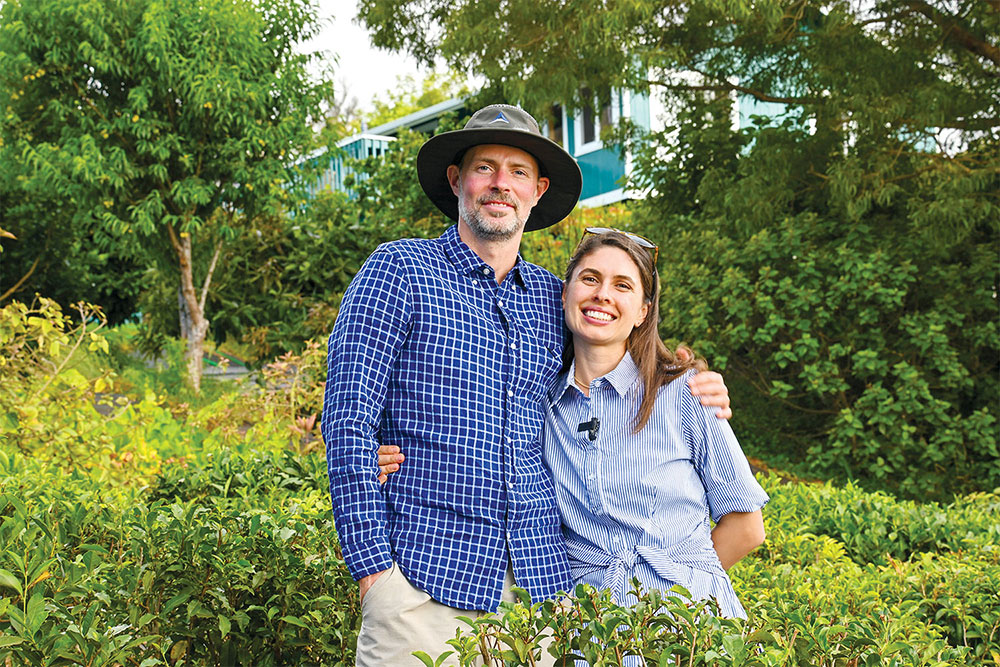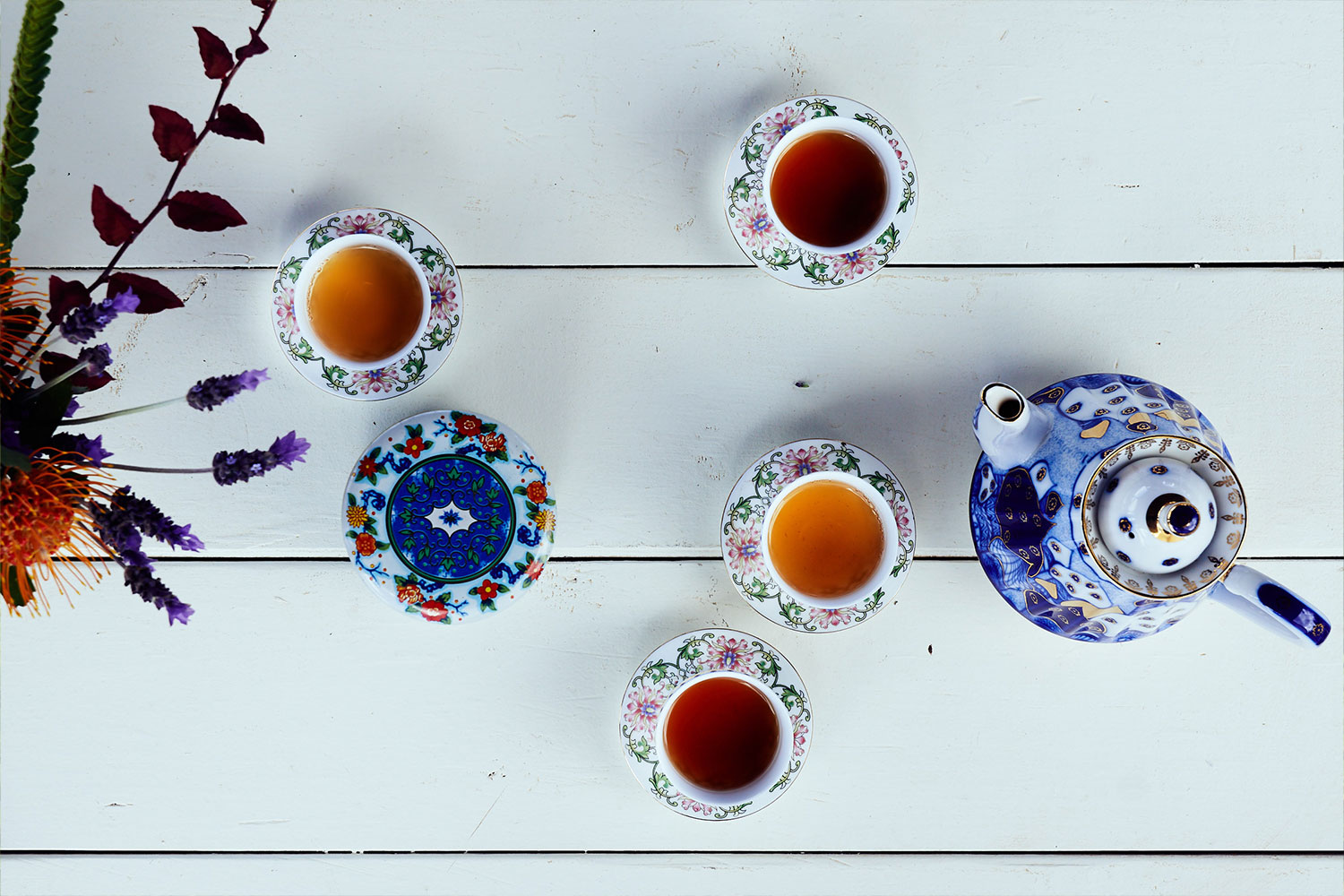Story by Krista Garcia

On the slopes of Haleakalā, some 4,000 feet above sea level, the cool air and cloud-kissed terrain is the perfect environment for growing tea. It is here that Alex and Andrea de Roode set up shop. Their combined expertise in nutrition, tropical agriculture and sustainability inspired the de Roodes to open the Maui Tea Farm.
“After water, tea is the most-consumed beverage in the world,” says Andrea, nutritionist, registered dietician and co-owner of the Maui Tea Farm. Tea originated in Southwestern China and was originally used for medicinal purposes. It contains a host of antioxidants and flavonoids that help the body defend against free radicals, as well as theanine, an amino acid which heightens awareness and calms anxiety. “We’re an overstimulated society and tea is the perfect remedy for that,” Andrea says.
Using organic, sustainable methods, the de Roodes grow and harvest Japanese green tea varietals to create their brand, PONOinfusions. (in Hawaiian, pono means “balance” or “proper.”) “Our Haleakalā Black Tea is a Darjeeling cultivar, and our plants were grown using seeds and cuttings from the Big Island,” says Andrea.
In the fall and winter months, the shrubs don’t look like much, but Andrea explains that they’re dormant. “We’re doing a hard pruning right now because we want to harvest the new growth — the pekoe, the two new leaves and a bud — in the summer and early autumn,” she says.
She continues to explain that teas from green to black and anywhere in between can be made from a single Camellia sinensis tree, depending on the process. “As soon as the tea is picked it begins to dry and oxidate,” says Andrea. “The amount of oxidation the pekoe is allowed, the way it is processed and whether or not the leaves are rolled determines the final product.” Rolling the leaves breaks down their cellular walls and releases their juices, thereby activating fermentation to create a range of flavors; all types of tea are rolled except white tea.
The de Roodes also grow coffee, citrus, olives and māmaki, an endemic, sacred plant used in traditional Native Hawaiian medicine. Māmaki is the preferred food of some indigenous insects, including the pulelehua, or Kamehameha butterfly.
“It’s not all about taking and harvesting from a human consumption standpoint, it’s about balancing things with the ecosystem,” says Andrea. “That’s very much how Native Hawaiians farmed, from mauka [mountain] to makai [sea]. We want to perpetuate the ecosystem for future generations.”
Maui Tea Farm, 18303 Haleakalā Hwy., Kula | mauiteafarm.com | 855.766.6808 |
IG/FB @mauiteafarm | IG @ponoinfusions

Drink the Rainbow
White tea has a light flavor and body. It is minimally processed with low oxidation and is not rolled.
Green tea has both grassy and umami notes. The leaves are cooked immediately after picking, and then rolled and dried.
Oolong tea ranges in flavor from light with honey tones to heavier with a woodsmoke quality. The leaves are partially dried in the sun before rolling and fermenting.
Black tea has a somewhat bitter, caramel flavor. A longer oxidation time before rolling means it is richer in health-boosting antioxidants.






Looks Amazing!